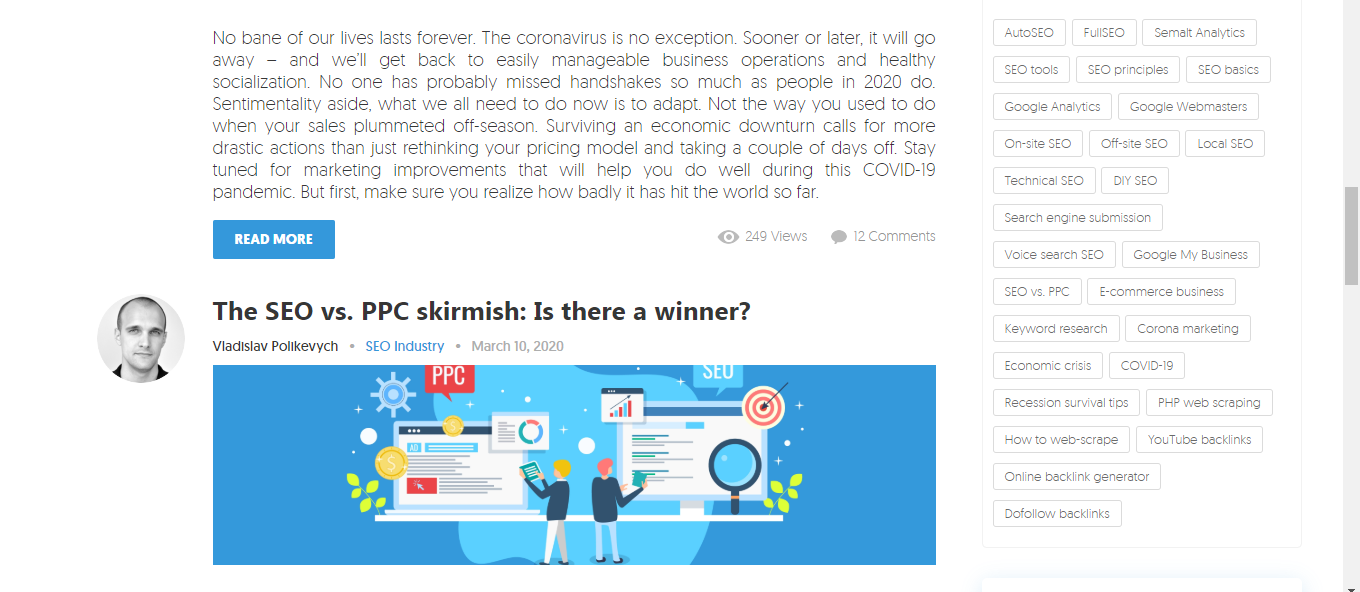Ten Steps From Semalt You Can Use to Build a Google Friendly Website That Will Rank High

Google’s search engine optimization protocols will define what goes into their website. Without knowledge of what makes a Google-friendly website, your site won’t do well on the rankings. With Google dominating 75 percent of the search engine world, ranking on google is a need to have a successful website.
With this article, we are going to give you a list of ten actionable-proven methods on how to help your website grow. These are associated with practices certified by Google or proven methods through other areas.
- Give people something of value
- Make your website accessible
- Offer guest posts that link back to your page
- Make sure your site is on Google
- Be aware of titles and headers
- Create a meta description
- Use a structured data markup
- Establish yourself as an authority
- Optimize your pages for mobile access
- Hire an SEO Expert
Give People Who Access Your Website Something of Value

There are thousands of pages competing for content at any given moment.
As a result of this, you need to be able to differentiate yourself. By providing something of value in your posts, this is the first step to that. In the case of this blog, our “something of value” seeks to be a simple guide to creating a Google-friendly site.
In your case, imagine that you want to create available content for people getting into playing guitar. You aren’t like to produce a complicated piece on music theory. You are most likely to produce something consumable for a broad audience.
Consider a pillar page, which is an all-in-one guide that is dividable into smaller pieces. It allows you to repurpose blogs for other purposes. It also is an excellent method to get people to come to your page, as it covers a diverse set of topics.
Good examples of pillar pages will contain unique graphics. These include tables, bar charts, line charts, and pie charts. Find a way to make it detailed, easy-to-understand, and simple to read. Formatting is your friend.
Make Your Website Accessible For a Broad Audience
Google’s crawlers, or AI used to scan websites, has a natural preference toward text. As a result, Google suggests making sure that your website readable by a text-only browser like Lynx. Words are still the most accessible platform for multiple parties, including those with visual impairments.
This suggestion does not mean that you should avoid video and audio channels. Consider providing a transcription to those who view any podcasts or videos you produce. This process allows you to repurpose your content in a reasonably straightforward format.
What Is The Best Method for Offering Guest Posts to Others?
If you are familiar with SEO, you know the importance of producing linkable content. In the early going, it is difficult to gain this following. One way to create links going back to your page is by providing content to others in a similar niche.
You will also need to find a site that accepts guest submissions. These can include Buzzfeed, Wikihow, Blogdash, and Forbes. All of them can apply to your niche, given their open topic variety.
For example, if you are a video producer in the States, you may consider reaching out to another video producer that does not compete with you as a content platform. But using a repurposed section of your pillar page, it allows you to provide a link from their site to your detailed page.
By bringing them back to a detailed, informative piece of information that fulfills things adjacent to their search, they will define you as an authority. Google determines you as an authority through the paths leading back to your page. It is a mutually beneficial relationship that works for both parties.
Making Sure Your Site is On Google
Websites find their way onto Google through one of two methods: being listed for the first time or being re-indexed.
To be listed for the first time, you are going to have to submit your website to Google. Semalt can assist with this, but you can also use resources on Google as well. You can do this by logging into Google’s webmaster platform, checking your status using the Index Status Report.
Google allows you to re-index your website when you have improved SEO as well. If you do not like the format of your old site, Google will allow you to resubmit your sitemap. A sitemap is a navigational list of different pages that comprise your website. The URL Inspection Tool is the best method for completing this process.
How Do Titles and Headers Help My SEO?
Titles and Headers are the first pieces of information that people see when entering your website. People like to see a direct headline that tells them what to expect. Google likes this as well, as those with clear, direct titles often dominate the tops of search results.
The same direct method should be in the headers. List postings are natural examples of this, as they find themselves in the featured snippet section, or the section devoted to the Q&A above the ten blue links. These overtake the top ten options on a
Google page for those searching a question.
For example, having an H2 ask a question with a series of H3 headers answering the problem is an impressive format to choose. It is a pretty typical format in the blogging world.
How Does a Meta Description Help Me?
A meta description is a section of the website that provides a short story that Google puts on its page. The meta description is just below the “title” on the search results section. Not submitting one is losing out on one aspect of SEO.
Recall what we said earlier about the importance of using your words. Text is an all-encompassing format that still dominates search engines. Meta descriptions are considered the text of your video. Consider it an extension of the subtitle.
Be aware that meta descriptions are something of an HTML application. The most common being what we see below.
<meta name=”description, title, etc” content=”text you plan on using for your SEO”>.
How Can a Structured Data Markup Help Me?

A structured data markup allows you to categorize different aspects of your business in an easily searchable format for google. This process is especially crucial for those who are seeking to rank with local SEO. As one of the pieces of information you can enter is location.
Other important aspects include opening and closing hours, company logos, and videos about your business. This application requires some knowledge of HTML, but by reviewing our other blog on the subject, it gives you a good starting point.
Establish Yourself as an Authority
By producing a large amount of content, this will naturally happen over time. Early one, you may not have as much to fall back on. However, you can use other experiences to bolster your claims.
For example, if you want to establish yourself as the foremost copywriter in London, you may share past experiences of your success. You may also offer up tenure and a short description of other recent experiences to prove your prowess.
The best way one can establish themselves as an authority is through a large amount of well-researched and helpful content.
Optimize Your Website For Mobile Access

Google has an available mobile-friendly tool that makes it easier for you to test your website. In our other blog, we will go into more detail. But the common theme is the simplicity of content and finding a web host that has ample support for mobile optimization.
Search for those who have an awareness of Accelerated Mobile Pages (AMP). This keyword is common in mobile optimization, as it is a normal process that many websites use. Read our additional blog on the topic for more details, as it can get complicated.
Conclusion
We have gone through ten different actionable options to apply to your website to ensure that it is ready for Google. These habits will give you greater ease in getting to the Google top. Some small adjustments may be enough to bring you a page over the top.
Formatting is a big deal when it comes to SEO. Google has an extreme love for those who know how to use their Titles, headers, and markups to sort and categorize their website. Combining these techniques with a proven specialist in SEO is a great path to get you to the Google top.